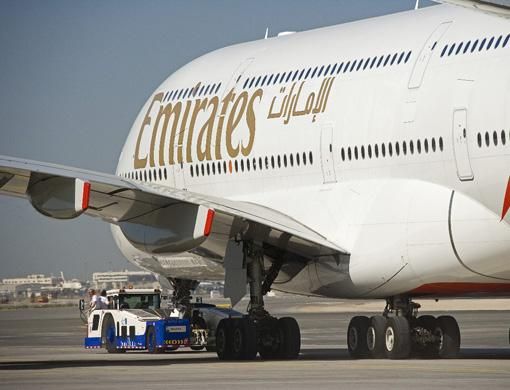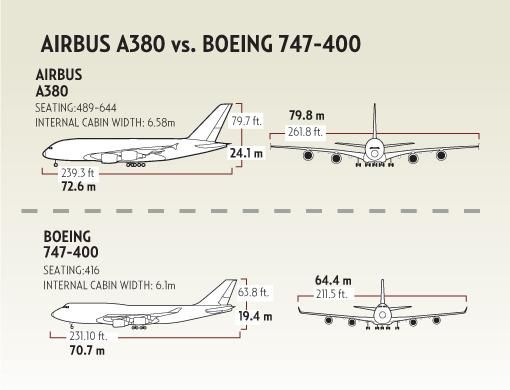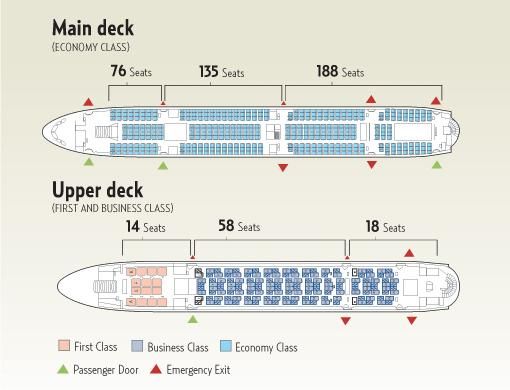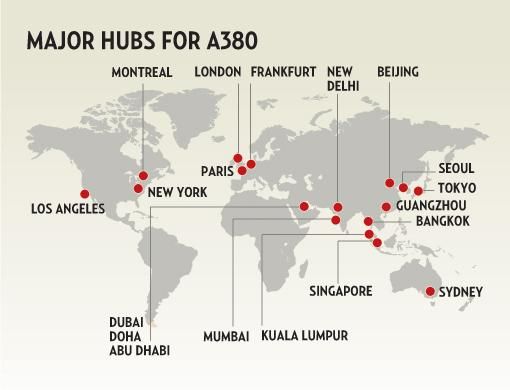Dubai: As delayed flights go, this will take some beating, but it's finally about to arrive. When the ribbon is finally cut and the keys of a shiny new 276-tonne A380 are handed over to Emirates today, the world will be watching.
And while there will be no concourse announcement apologising for the late arrival of Emirates flight EK7380 (by almost two years), the Airbus top brass will also be breathing a collective sigh of relief.
Emirates will be happy too, as it is finally able to begin putting into place the aggressive expansion plans set in motion when it became one of the first airlines to jump on the A380.
When the plane finally takes off from Hamburg to Dubai, it will spell the beginning of the end of a rough journey for the aircraft giant.
At first Airbus had a smooth ride, the A380 was a PR man's dream. Striking, bold and promising to revolutionise the travel industry, it quickly started gaining the upper hand in the order book battle with Boeing.
The first flight in April 2005 was seen around the globe. The double-deck aircraft then wowed the world on a whistle-stop promotional tour, including a first appearance and obligatory Burj Al Arab flypast - in Emirates livery - at the Dubai Air Show.
But a completely smooth flight is a rare thing, and Airbus first started to encounter what was at the time, mild turbulence, when it announced the first delay in the delivery of the giant plane.
The announcement, made in June 2005 and caused by an issue with the hundreds of kilometres of wiring needed to keep the giant bird in the sky, pushed the time for the first commercial flight of the A380 back by six months.
While the tray tables were probably politely stowed away at this point, the seatbelt signs were switched on in earnest just a year later with the announcement of a second delay.
This news - although Airbus still claimed it would make its maiden delivery to launch customer Singapore Airlines by the end of 2006 - began to cause ripples within the industry. Major customers began to publicly grumble, with Emirates - the largest customer for the superjumbo - among those displaying concern.
And with good reason too. The A380 was and is a vital part of the airline's expansion plans, and the constant pushing back of the delivery of its first plane (it is the second customer after Singapore) would have an obvious knock-on effect. Emirates has ordered 58 of total 129 A380 orders Airbus received till June 2008.
Those ripples not only affected customers, but it made shareholders jittery too.
EADS (Airbus' parent company) share price took a nosedive, falling by around a quarter.
And when the markets react like that, the end result is usually obvious. Three of the company's top men, EADS chief executive Noel Forgeard, Airbus chief executive Gustav Humbert, and A380 programme manager Charles Champion, left as it scrambled to maintain some stability.
But bad news always comes in threes, and yet another delay came just three months later, before new chief executive Christian Streiff even had time to get his feet under the desk. News of this delay - which would push back the handover of the first plane until October 2007 and the first Emirates version to August 2008 - was greeted with fury by long suffering customers.
Tim Clark, president of Emirates, was particularly vocal, hinting at one stage that the company may consider cancelling some of its orders. A move which would have left Airbus in serious trouble.
Other customers from the Gulf, including Qatar Airways, also lamented the delay, declaring that it would have a direct knock-on effect on its expansion plans.
Selling point
It was probably the unique passenger load of the superjumbo that saved the company from a mutiny. Put simply, there was nothing else in the skies quite like the A380, even the largest version of the Boeing 747 would be left more than 100 passengers short per flight.
This meant airlines that had taken the gamble and ordered them would have to make serious adjustments to their long-term strategies if they wanted to look elsewhere.
Clark admitted as much after the news broke in October 2006 when he said: "We cannot wait forever but at this point there is nothing that comes close to the A380 as far as seat capacity. I hope Airbus puts their house in order."
However, there is no doubt that the continued delays could have damaged relations between Airbus and its best customers. "This is a serious issue for Emirates and the company is now reviewing all its options," Clark said in a separate interview at the time.
There could still be a rough road ahead. While planes are now being delivered, the latest round of delays has seen Airbus cut the number of planes it plans to deliver in 2008 and 2009 to 33 - five fewer than those promised just a year earlier.
But it's not all bad news. On the operational front, Singapore Airlines has been happy with the fuel economy of the four planes it has taken delivery of, an important fact in times of high oil prices.
Load factors on A380 flights are also high, with tickets on the giant jet fetching a premium over smaller and older aircraft.
Now it is the turn of Emirates to get its hands on the most famous aircraft in the world. It's an aircraft which will not only turn heads, but also enable it to fly more and more passengers around the world - especially when it starts ploughing the money-making London route later this year.
Providing the worst of the turbulence is over, the future could well be bright for both Emirates and Airbus.
















